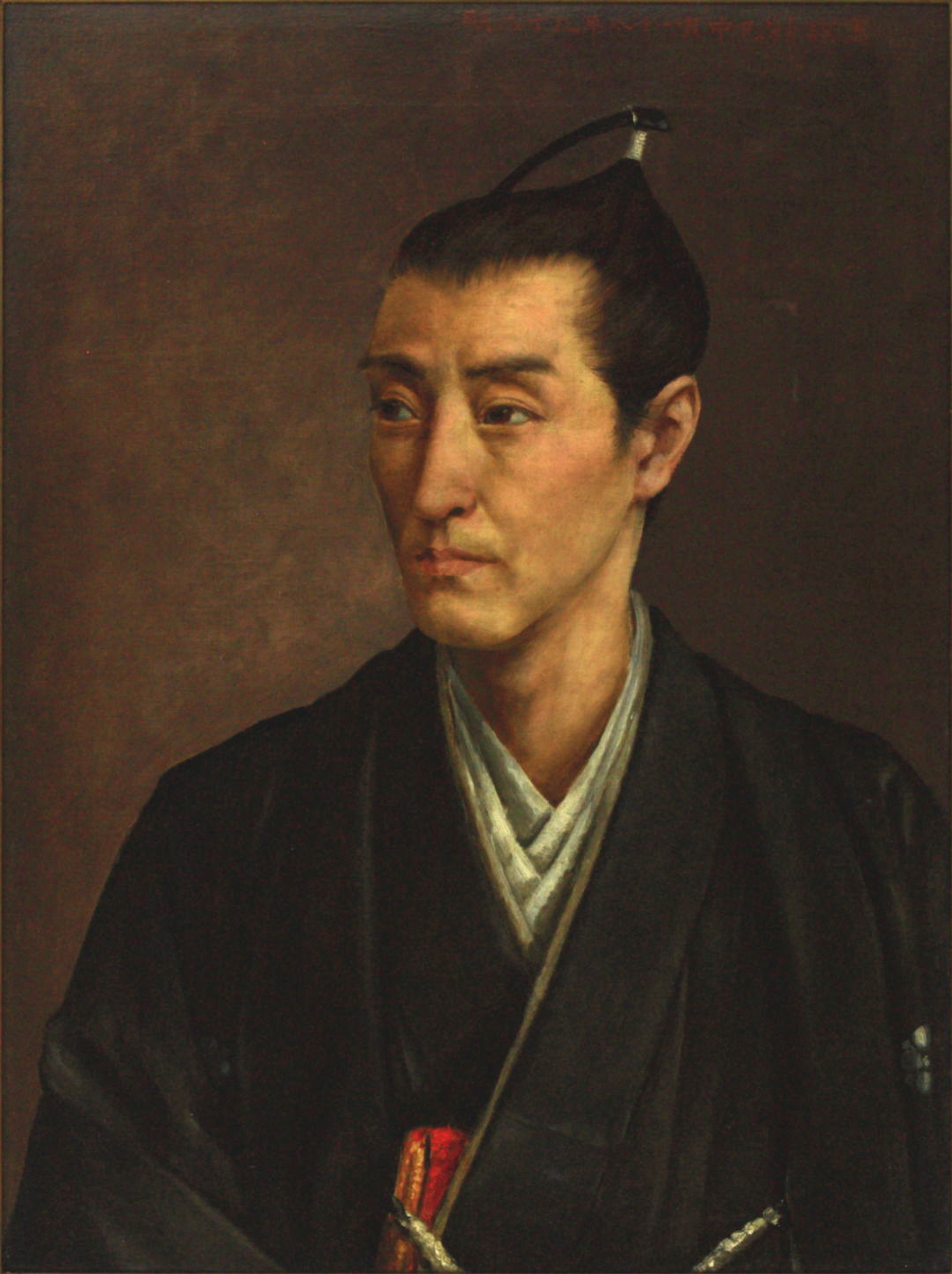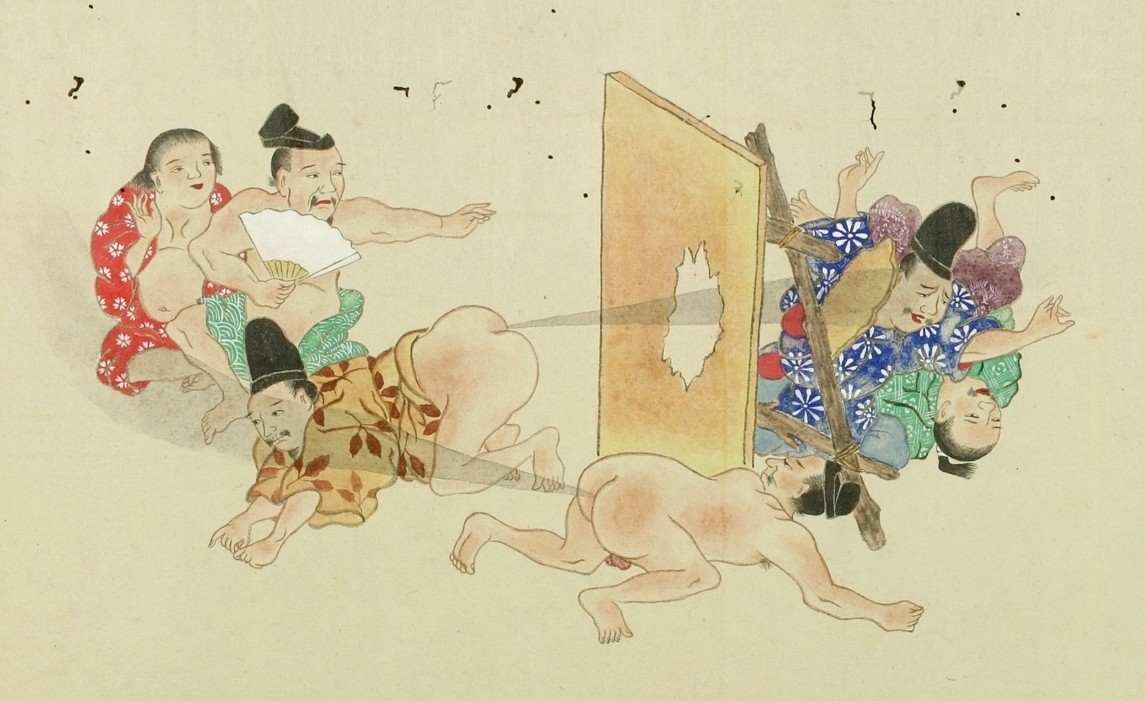In the mid-18th century, Edo (modern-day Tokyo) had over 1 million inhabitants, making it the largest city in the world. That didn’t make it the best place to live, though. The city was constantly plagued by fires, famines and plagues, forcing the citizens of Japan’s capital to find joy wherever they could. So, they overwhelmingly went looking for it in books. High literacy among Edo commoners in the 1700s created a market for mass production of literature and, with it, the country’s first bestselling author: Hiraga Gennai, also known as Japan’s Leonardo da Vinci — that is, if da Vinci enjoyed puns and fart jokes.

Portrait of Hiraga Gennai, by Nakamaru Seijuro, Waseda University Library, Japan (Source: Wikimedia Commons)
Gennai’s Lousy Educational Jokes
Born the son of a low-ranking samurai in 1729, Gennai eventually becomes a ronin and self-taught expert at just about everything. He’s credited with inventing the first Japanese thermometer, experimenting with electricity, cataloging Japan’s native flora and much more. He was also well-versed in all forms of literature, as evidenced by the fact that he could make fun of it like no other. Parody and satire ultimately cannot succeed without in-depth knowledge of the thing that they’re skewering in order to expose its shortcomings, clichés, or just to have a laugh. So Gennai’s comedic writings not only tell us what made Japanese people laugh hundreds of years ago, they also showcase the basics of various Japanese literary styles.
take A Lousy Journey of Love (1783), which serves as a great example of “michiyuki,” a lyrically-narrated scene from Noh or Kabuki theater where, usually, a couple travels somewhere to commit suicide because they can’t be together. To quote from the work: “Our bond was unaccepted by our parents … Run or fly, the joys of life are flying. So don’t idealize them.” None of those are typos, by the way. Rather, they are Timon Screech’s fantastic translations of all the puns found in Gennai’s original where the star-crossed lovers are lice traveling down a boy’s body. During their michiyuki, they go down such locales as Scapula Pass or Vertebrate Highway, stopping at the Temple of St. Anus before reaching their final resting place in “Hotel Testicle,” which, according to Gennai, is in Mie Province. Perhaps that should be Mie Prefecture’s new tourist slogan: “Come have a ball in Mie.”
Gay in Both Senses of the Word
my hurry (playful writing) is the original Japanese comic literature where the humor stemmed from the fact that classic Chinese poetry and poetry were used to describe scenes of ordinary, everyday life. Side-splitting stuff. But leave it to Gennai to take that simple concept and do something hilarious with it.
in Rootless Grass (1763), Gennai, an openly gay man, writes about Enma, the ruler of hell who falls in love with an onnagata, a male actor specializing in female theater roles and a kind of third gender during the Edo period (1603–1868). Enma orders his minions to bring the actor to the underworld. One of them, Kappa, a kind of river monster, attempts to kill the onnagata, but ultimately cannot do it because it too has fallen in love with the actor. So Kappa instead drowns another onnagata, whom Enma rejects. You really have to feel sorry for the victims here. First they get murdered and then they get their looks insulted? Ouch. In the end, Enma goes to the human world himself to look for his love, whereupon a folk hero finds and defeats him, sending him back to hell with a case of blue balls. No mention if any lice were staying there at the time.

Hegassen scroll detail. He-gassen, Fart Battle, 1864 (Source: Wikimedia Commons)
Gennai on Farting
One of the foundations of comedy is incongruity, the juxtaposition of ideas not normally associated with each other. Gennai shows off a mastery of the concept in one of his most famous and self-explanatory works ever: On Farting (1774). Composed of two parts, On Farting mixes classical, modern, formal and contemporary Japanese and Chinese as it lectures about the superiority of breaking wind to many other art forms. The piece was inspired by ‘The Flower-Blooming Man,’ a real fart artist who entertained crowds in Ryogoku in the 18th century by farting to the tune of popular songs and imitating animal sounds with his backdoor flute. He was a big success, and in On Farting, Gennai explains why he admires him for that.
According to the author, art schools only teach tradition, rote memorization and the copying of old masters without innovation, which is why most modern art is soulless. But the prestige of these schools gives their graduates an air of legitimacy even if they have no talent. The fart artist has none of their pedigree, though. He has no roots, traditions, or teachers. And yet, he still gathers large crowds through hard work and, according to Gennai, if the rest of society was as dedicated as him, the world would be a better place. The flowery and eloquent language clashes hilariously with the base subject matter, creating 18th-century Japanese comedy at its finest, fueled additionally by the fact that readers never know whether Gennai genuinely felt this way, or he was just messing with everyone.
In conclusion, Hiraga Gennai might have invented trolling several centuries before the internet.
More Articles on Japanese History
Read about people and events that often go unmentioned in Japanese history classes:
